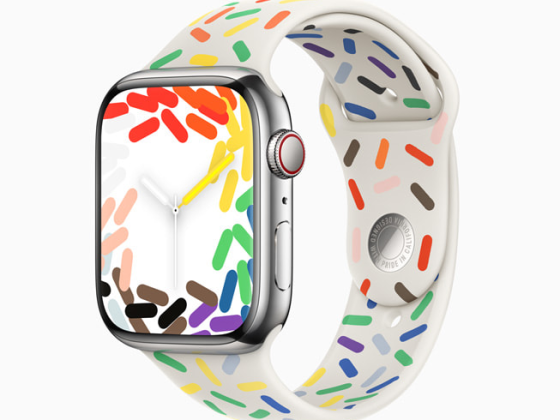There is an ever-increasing number of apps competing for people’s attention and their wallets. At the same time, as smartphones become increasingly affordable and ubiquitous, the diversity of the audience for any app is growing. To maximize the opportunity presented by these expanding audiences, developers need monetization strategies that increase LTV and maximize revenue. This post looks at a strategy that has been proving very effective: hybrid monetization.
Many developers typically choose one monetization option that fits their audience and core app experience best, be that in-app advertising, in-app purchases (IAP), or subscriptions. However, this can result in a conversion ceiling, where incremental optimization brings diminishing returns.
From our partners:
It then becomes clear that different user behaviors and user segments can benefit from different monetization models. In short, one-size-fits-all monetization might not be the best approach.
Hybrid app monetization meets these challenges by allowing for varying combinations of revenue streams. Indeed, over a quarter of top monetizing apps on Google Play are doing so through a combination of direct revenue (subscriptions and In App Purchase) streams.
There are 4 ways in which you can implement a hybrid monetization strategy, as shown in this diagram:
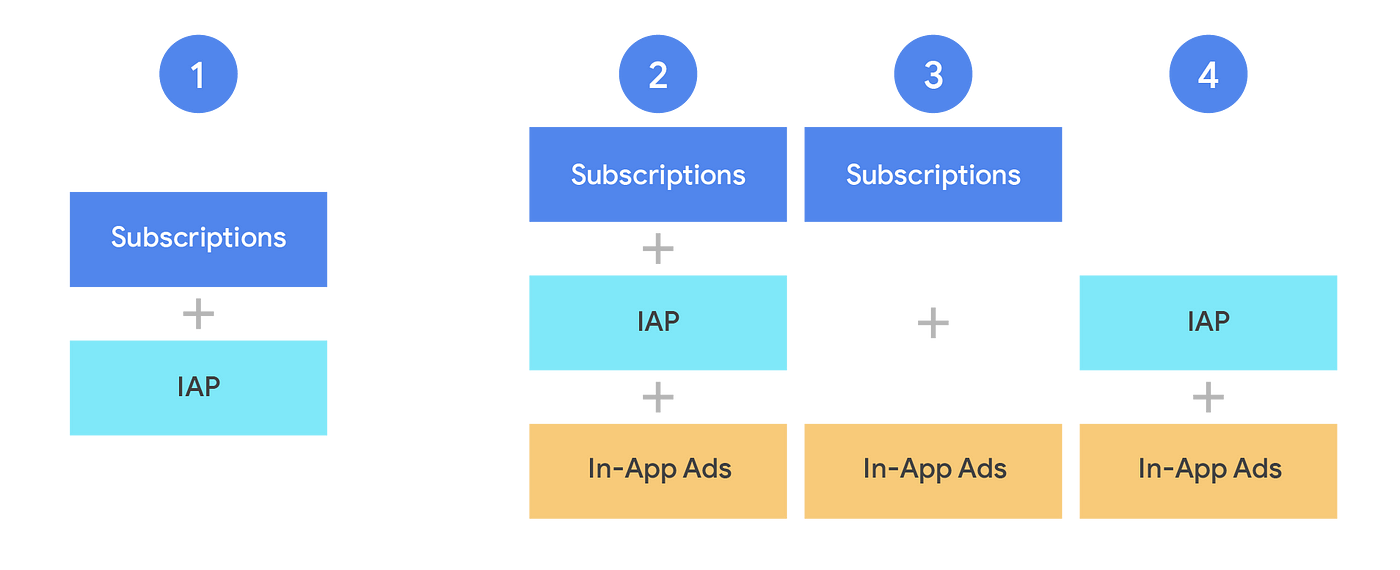
The remainder of this post looks at option 1, monetizing users directly, in more detail.
How hybrid monetization can impact revenue
Before designing a hybrid monetization strategy, it is useful to understand how this approach helps increase your revenue. This is best illustrated by referring to the classic demand curve.
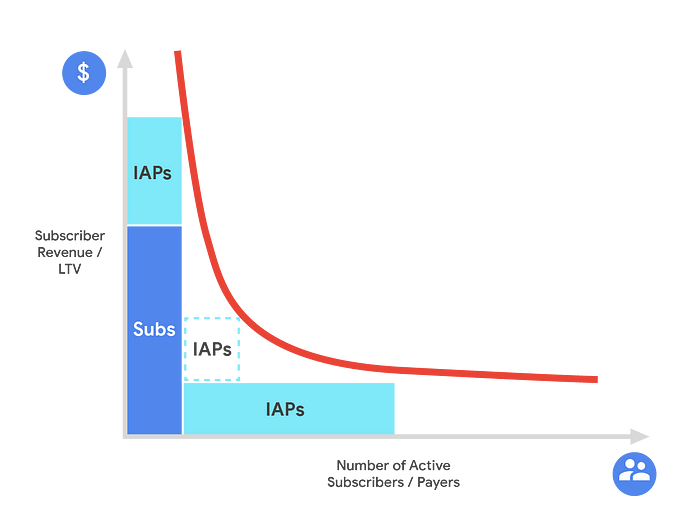
While your app’s demand curve may look different, the preceding example highlights the opportunity in crafting IAPs relevant to subscribers as a way to improve revenue. IAPs are often lower-cost alternatives to subscriptions and can be an opportunity to monetize users who are unwilling to commit to a subscription.
Designing a hybrid monetization strategy
Armed with this demand curve information, think about monetization options in terms of:
- what product offerings are the best fit to subscriptions compared to IAPs and how to define their respective user segments.
- the optimal mix of offerings to maximize the number of buyers and the revenue from those buyers. Or, to put it another way, how you might fill the area under the demand curve red line.
The approaches that you can take include offering:
- high-value IAPs to increase the lifetime value of yearly or lifetime subscribers.
- other subscription tiers, although these present a challenge with their conversion ceiling.
- lower-priced IAPs, to increase the buyer base and ARPU. However, care is needed to create a unique value for each monetization model and avoid subscription revenue cannibalization.
Tip: Lifetime subscriptions are fundamentally subscriptions, not IAPs, based on the packaged value. Therefore, promote them along with monthly and annual subscriptions, but with different billing set up.
Another factor to consider during the design process is how comfortable your app’s audience is with subscriptions compared to IAP products. This could mean that you take an approach where:
- subscriptions are promoted first, with complementary IAPs (most monetizing apps fall into this category).
- IAP offered first, with subscriptions as an alternative.
- giving both equal importance.
Choosing features for subscription and IAPs
The choice of features that you sell through subscriptions and IAP products is critical to the success of a hybrid monetization strategy.
Subscriptions are best suited to features offering long-term use and consumption, that don’t expire or run out, and fit a recurring billing model. These include:
- access to a content library. For example, streaming all audio or video content.
- access to greater data storage or unlimited archiving.
- access to full functionality. Such as full educational, training, or media content, or premium analytics.
- offline access. For example, the option to download audio or video content and listen or watch offline.
By contrast, IAPs are best suited to features designed for short-term, limited use and fit a one-off billing model. These include:
- features or content pieces that have limited-time or seasonal value, expire, or run out. For example, boosters and progress accelerators or temporary profile featuring.
- features for one-off use, such as tokens to fix, freeze, or pause streaks or counters.
- features for perpetual use, such as ads removal.
- in-app currency.
However, when designing your subscriptions and IAP products, you also need to consider whether they can:
- overlap so that people can purchase the same features with either a subscription or an IAP. Also, IAPs can offer a subset of subscription features, or subscriptions can include some IAP features.
- complement so that people purchase different features with subscriptions and IAPs with, in general, IAPs made available on top of subscription to unlock complementary features or exclusive content.
Examples
There are many ways developers combine subscriptions and IAP revenue streams:
IAP and subscriptions are equally important
Concepts is a sketching and creativity tool that began life offering in-app feature packs. However, the developers were approached by many users who wanted an easy way to unlock all the features and, because the app had become part of their creative routine, better support the developers long-term. Concepts, therefore, added a subscription option to unlock all features.
David Brittain, CEO of parent company TopHatch, says, “By giving users a choice between standalone IAPs and a subscription offering, Concepts provides monetization options that suit the needs of people based on their level of use. This has helped earn Concepts a strong track record of positive user feedback.”
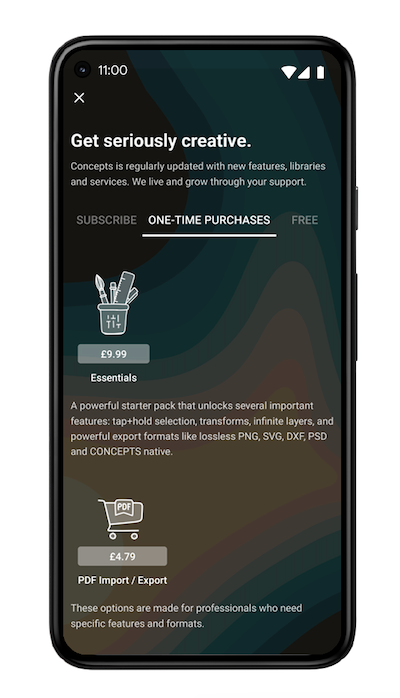
Subscriptions (primary) with IAP
The language-learning app Tandem predominantly monetizes using subscriptions. However, their team regularly runs experiments to optimize their monetization. A recent test was designed to assess users’ interest in an official language certificate IAP, to measure their conversational abilities in English. Results indicated good monetization potential. The team settled on making it a one-time purchase, where people complete the language test and then pay to receive the results and certificate.
Tandem co-founder Tobias Dickmeis explained that subscribers buy these IAPs more than non-subscribers. Therefore, by offering an additional feature not available in the subscription, Tandem ensured there was no cannibalization of subscription purchases.
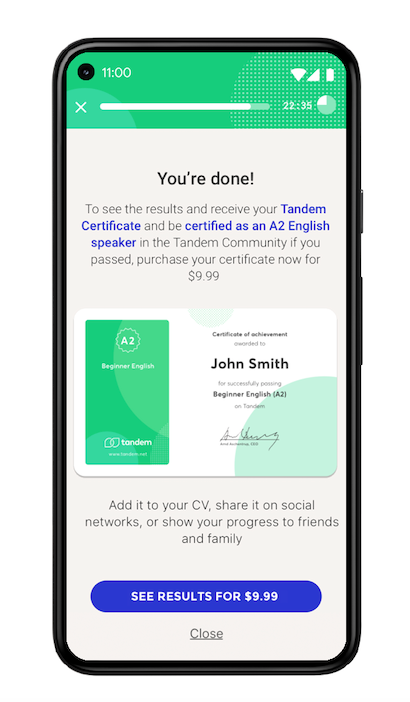
IAP (primary) with subscriptions
The hiking and cycling app Komoot offers users the ability to purchase navigation packages by region, which is ideal for casual users. Philipp Regnat, Komoot product manager, says that “while it was clear our core customers appreciate the IAP packages, the team introduced subscriptions to mitigate reaching a conversion ceiling.” Before introducing the subscription, a target group of power users was asked to provide feedback about what subscription features would be most appreciated. The resulting subscription product gives people access to the complete, global catalog of navigation packages and features such as a planning tool for multi-day adventures, Live Tracking, Sport-specific Maps or detailed weather forecasts for every tour.
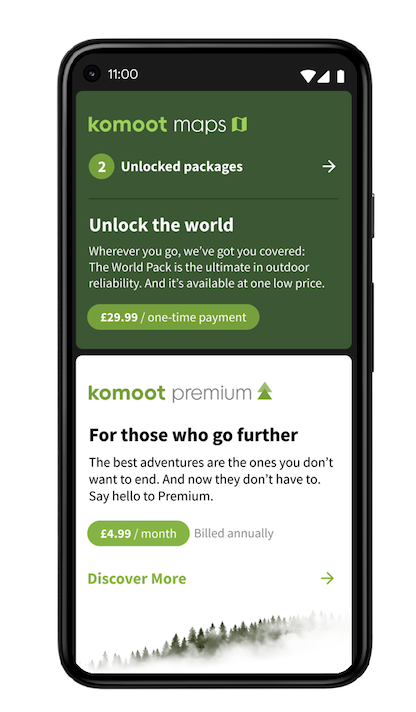
In addition to the right designing of subscription and IAP products, a critical factor in the success of a hybrid monetization approach is messaging. It’s essential to have clear upsell messaging for each revenue stream in appropriate places in the user funnel.
Learn more about onboarding users and the apps user journey in this article series.
In general, subscriptions are prompted from the moment of onboarding until the user becomes engaged and committed. By contrast, messaging for IAPs depends on each item’s value proposition: IAPs can be surfaced from onboarding onward, but are typically prompted for activated and committed users.
The aim is to keep the messaging clear: at any point in the user journey, people should know what they are about to pay for or have paid for and what the benefits are.
Measure user monetization
It’s unlikely that your first hybrid monetization strategy design will be the optimal one. So, in addition to the standard information you might want about your monetization performance, you should consider targeting your KPIs to monitor and measure the impact of the strategy. Typical KPIs used for this purpose come from across the user funnel and include:
- onboarding, such as new install CVR and ARPPU.
- activated users, such as D28 CVR and D28 ARPPU.
- committed users, such as buyer %, buyer LTV, and ARPU (for ads).
Because different portions of your monetization strategy are designed to appeal to different user segments, you need to consider this when designing and monitoring your KPIs. Typical app monetization questions include:
- where in the funnel is conversion to the highest value product and lowest value product?
- how much can the funnel expand with unique buyers?
- how much more can buyers’ LTV increase?
For tips on how to monitor and measure KPIs, check out this Play Academy course.
Planning and testing
There are three steps to evaluating a hybrid monetization strategy: product checks, KPI checks, and devising a hypothesis for testing.
The product checks involve asking whether:
- the current product experience is limited or indefinite.
- customer feedback indicates a demand for different purchase options.
- the current value proposition can be adjusted or developed for long-term or one-off use and packaged accordingly.
- premium value is presented in the user funnel and where.
The KPI checks may involve asking whether:
- there is a high % of engaged non-buyers.
- ARPPU and CVR trends have flattened.
- there is a high churn of users at conversion points and renewals.
- there are users in countries with particular spending preferences.
- current monetization is above peer apps’ average, that is, performance has hit the ceiling.
You can then devise a hypothesis for testing, such as:
- non-buyer segments to target with different monetization.
- the segment of buyers to target to increase LTV.
- mapping of user funnel messaging to high-value vs low-value transactions to avoid cannibalization.
Conclusion
All hybrid monetization strategies are about giving users options. By combining subscriptions and IAP products to monetize users directly, you’ll end up with some users buying only subscriptions, some only IAP products, while others buy both subscriptions and IAP products.
Creating a successful hybrid monetization approach to direct monetization starts by reviewing the value proposition for your subscription and in-app products and where and how that value proposition is presented. Also, understanding the use cases that could be developed or re-packaged.
You then need to determine the KPIs you want to monitor to evaluate monetization potential. You do this by defining user segments for upselling subscriptions and IAPs, which help you understand the funnel for the best conversion to premium subscriptions and IAPs.
Then it’s a case of experimenting to identify segments for expanding the buyer base and identifying ways to increase buyer LTV with the hybrid monetization model.
By Jeni Miles
Source Android
For enquiries, product placements, sponsorships, and collaborations, connect with us at [email protected]. We'd love to hear from you!
Our humans need coffee too! Your support is highly appreciated, thank you!

